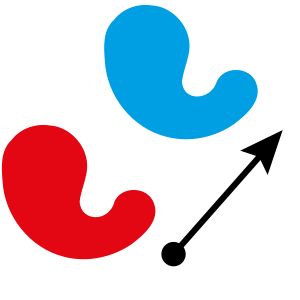Translation (geometry) facts for kids
In geometry, a translation is a special way to move things. Imagine sliding an object across a surface without turning it or making it bigger or smaller. Every part of the object moves the exact same distance and in the exact same direction. It's like a perfect slide!
Contents
What is a Geometric Translation?
A geometric translation is a type of transformation. A transformation is just a fancy word for changing the position or size of a shape. With a translation, the shape itself doesn't change at all. It keeps its original size, shape, and even its orientation (which way it's facing). Only its location changes.
How Does a Translation Work?
When you translate a shape, you pick it up and move it to a new spot. Think about these two important rules:
- Every single point on the shape moves the same distance.
- Every single point on the shape moves in the same direction.
For example, if you have a triangle, and you translate it 5 units to the right, every corner of that triangle will move exactly 5 units to the right. The triangle will still look exactly the same, just in a new place.
Translations in Coordinates
In math, we often use a coordinate plane (like a grid) to show shapes. If a point on a shape is at coordinates (x, y), and you translate it:
- To the right by 'a' units, the new x-coordinate becomes x + a.
- To the left by 'a' units, the new x-coordinate becomes x - a.
- Up by 'b' units, the new y-coordinate becomes y + b.
- Down by 'b' units, the new y-coordinate becomes y - b.
So, if you translate a point (2, 3) 4 units to the right and 1 unit up, its new position would be (2+4, 3+1), which is (6, 4). This applies to every point on the shape.
Real-World Examples of Translations
Translations happen all around us!
- When you slide a book across a table, that's a translation.
- A train moving along a straight track is performing a translation.
- An elevator going straight up or down is also a translation.
- When you move a piece in a board game like chess or checkers, if you just slide it without turning, it's a translation.
These examples show how objects move from one place to another without changing their appearance or orientation.
Images for kids
See also
 In Spanish: Traslación (geometría) para niños
In Spanish: Traslación (geometría) para niños



